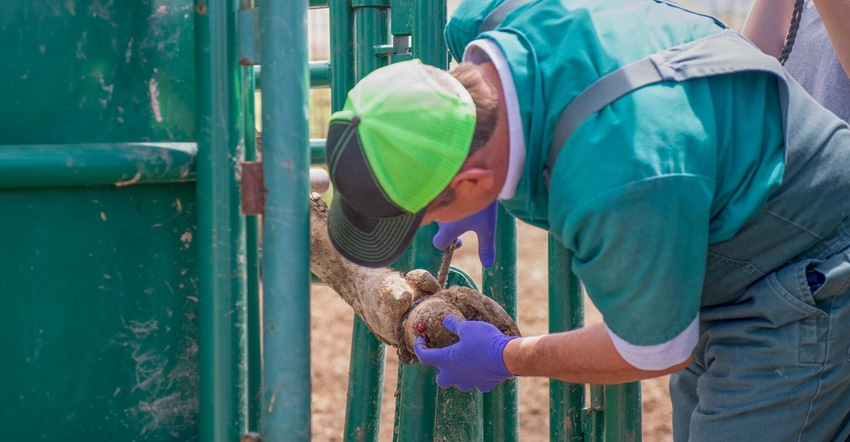Rural communities desperate for large animal veterinarians
Shortage of large animal veterinarians leaves livestock producers scrambling for animal health care.
May 26, 2021

Help wanted advertisements are everywhere these days. Pools can’t find lifeguards. Restaurants can’t find servers. Retailers are raising wages to attract new employees.
While these employee shortages may be a symptom of a larger issue and a topic for another day, in rural America, there’s a dire need for large animal veterinarians to provide animal health care services for livestock producers.
Recent headlines indicate the shortages across the United States.
The Kansas City Star reports that Kansas livestock producers are struggling to find vets. According to the article, “State, livestock and university officials are hoping Kansas ranchers will help a task force determine how to find more veterinarians to tend the state's crucial livestock industry.
“Cattle ranching and related businesses employ nearly 39,000 people and contribute an estimated $8.7 billion to the Kansas economy. But many livestock ranchers cannot find veterinarians to care for the animals.
“‘If you don’t have a veterinarian that you can contact to provide the various vet services, it can have devastating impacts to your business,’ Deputy Kansas Agriculture Secretary Kelsey Olson said.”
The Wisconsin Farmer also reports on this issue. Grace Connaster writes, “On a national level, according to the US Department of Agriculture, over 500 counties in 44 states had vet shortages in 2019, many of them rural areas. And beyond that, independent clinics are starting to go away, instead turning into corporate clinics with satellite offices. Many rural vets report having to drive multiple hours one way just to get to a client.
“Russ Daly, an extension veterinarian and professor at South Dakota State University, said many clinics are actually spending a lot of time trying to recruit new hires in rural areas, but it's hard to incentivize vets to live in rural areas because of a lower average annual income and small amount of clients for a large area. What's more, only 6.5% of vets practice large animal and livestock care according to the American Veterinary Medical Association.”
And in San Diego, Allison Ash reports that a pet adoption boom during the pandemic has stretched veterinarians thin even in urban areas.
Ash writes, “More than 12 million Americans adopted pets during the pandemic and now those pets need check-ups and booster shots but getting an appointment may not be as easy as it used to be. Veterinarians are scrambling to meet the demand, but some are telling NBC 7 it led to longer wait times and other workflow adjustments.
“‘We’re significantly busier than we have been,’ said Dr. Ben Singh, the owner of Aviara Animal Health Center in Carlsbad. Singh has owned the practice for 11 years and has seen continuous growth, but nothing like what he’s seen since the pandemic began.”
I’m not sure what the solution is to this shortage, but understanding we have a problem is the first step to supporting, encouraging and boosting up the veterinary community. Are you seeing these challenges in your area? Are you worried about veterinarian shortages? Share your thoughts in the comments section below.
The opinions of Amanda Radke are not necessarily those of beefmagazine.com or Farm Progress.
About the Author(s)
You May Also Like




.png?width=300&auto=webp&quality=80&disable=upscale)
